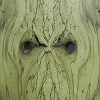I currently have a Grizzly 8" jointer. It works fine, but I have always loved those old American machines from the 40's and 50's. I am thinking about looking around for an old 12" - 16" American made jointer. I don't know much about restoring them, but I may do it anyway. I know they all run on three phase power, so I will need VFD to run it. I don't know much about that either. The question I have, since I don't know that much about them, is what machines are the best ones to purchase if you can find them? Over the years, I have seen old Northfield, Crescent, Oliver, etc. jointers for sale. I'm not sure which machines are better than others and what to look for when buying. Are some easier to adjust and change the blades than others? Are some fences better than others? Were they all pretty high quality machines, or were some brands considered lower quality back then? Any information and opinions on these old machines would be very much appreciated. I would like to educate myself a little and narrow it down before I think about actually looking for one.




 Reply With Quote
Reply With Quote






